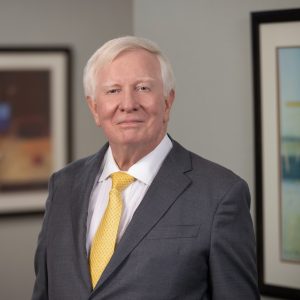CEO Leadership Series: Graham G. Lumsden, CEO, Motif Bio plc

AFTER DECADES AT MERCK, A NEW ENTREPRENEURIAL BEGINNING
After 26 years at Merck & Co. Inc., Graham G. Lumsden was evaluating his career options. He decided that more of the same wasn’t for him. Instead, Lumsden, a veterinarian by training who held progressively responsible marketing positions with Merck AgVet before moving into the human health side of the business, where he ultimately became Merck’s Worldwide Business Leader, first for osteoporosis then for contraceptives, left the global pharmaceutical giant Merck to explore smaller, more entrepreneurial organizations. When Richard C.E. Morgan, the CEO of Amphion Innovations plc and the chairman of Motif BioSciences Inc., approached Lumsden about filling the CEO position at Motif, Lumsden recognized the offer presented a singular opportunity. CEO since 2013, Lumsden is charged with guiding the development of iclaprim, a unique clinical-stage antibiotic designed to fight multi-drug resistant bacteria and treat hospital-acquired infections. Bringing a new, more effective antibiotic to market is more critical than ever. The Centers of Disease Control reported in 2013 that bacteria that are resistant to antibiotics had infected 2 million people and at least 23,000 people in the U.S. have died as a direct result of those infections.
As Motif prepares to start Phase III clinical trials with iclaprim, Lumsden is focused on building the leadership team and continuing to refine the future capital-raising strategy following Motif’s IPO (independent public offering) in London in April.
“I’m thoroughly enjoying what I’m doing and I was correct in thinking I wanted to move into a more entrepreneurial role,” said Lumsden. “That being said, there’s no way I could do what I’m doing today without having completed a diverse 26 years at Merck. It was a phenomenal training for me and it was absolutely the right foundation for what I am doing now.”
In an interview with Ashton Tweed, Dr. Lumsden discusses transitioning from Merck to a small start-up environment, his biggest challenges as the Princeton-based CEO of the London-based Motif, and what’s next for the company.
Why did you leave Merck after 26 years?
I realized that 26 years was quite a long time and that I wanted to be in a more entrepreneurial role and environment. I’d had enough of “big pharma,” which was becoming overloaded with committees and multiple layers of decision-making, in my opinion. Through my network I met the chairman of Motif, Richard C.E. Morgan, who was looking for a new CEO to take the lead at Motif. Richard was the co-founder of Celgene and I thought it would be a phenomenal opportunity to be able to work alongside him.
One of the things that attracted me to Motif is that I am able to make decisions very quickly and act upon them, which was becoming less and less the case at Merck. I’m not singling out Merck as the problem; I think it’s the case at many big pharma companies. But at Motif, I’m able to thoroughly analyze a situation, make a decision and act on it very quickly.
You’ve been at Motif for a little over two and a half years. What key decisions have you made?
One of the first things I did when I joined Motif was to focus the organization on one core area. Motif had been focused on several different therapeutic areas. I decided that it was best for a start-up company to focus on one area – antibacterials.
Motif had preclinical programs focused on developing best-in-class compounds from first-in-class compounds using medicinal chemistry. But the programs were so early-stage that it was proving very difficult to find investors. After searching high and low for capital from angel investors, family officers and venture capitalists, it became abundantly clear to me that it would be much more straightforward to raise capital if we had one or more later-stage assets. Based on the caliber of our scientific team, Motif was able to acquire the worldwide exclusive rights in December 2014 to develop and commercialize the novel antibiotic iclaprim, a late-stage clinical asset. Since then, we’ve gone on to raise about $40 million from retail and institutional investors in London.
What is iclaprim and why is it important?
Iclaprim is a novel dihydrofolate reductase-inhibiting antibiotic in an “underutilized class.” We say underutilized class because there has been only one other antibacterial with the same mechanism – trimethoprim. Trimethoprim is a very old antibacterial still used sometimes today in primary care settings, but it’s not potent enough as an antibacterial to use on its own and so is used in combination with a sulphonamide. Hoffman-La Roche Ltd. discovered iclaprim when the company set out to find a more potent version of trimethoprim – and it did a very nice job because iclaprim is 16-fold more potent than trimethoprim, enabling it to be used as a single agent rather than as part of a combination. Hoffman-La Roche also designed iclaprim so that it remains effective at killing bacteria that have developed resistance to trimethoprim.
We are studying iclaprim initially for two indications—acute bacterial skin and skin structure infections and, assuming we have the capital, hospital-acquired bacterial pneumonia. Our peers are developing antibiotics from other classes, while iclaprim is the only dihydrofolate reductase-inhibitor currently in development. We felt that was a pretty interesting opportunity from a scientific perspective, as well as an investor perspective.
Why did Motif go public in the U.K. and not the U.S.?
Even as a pre-clinical company, Motif had started to explore the possibility of becoming a public company. We had some preliminary meetings with investors and brokers (banks) in London. They liked the idea of investing in a company with a novel antibiotic because, just as in the U.S., there’s been a lot of media attention in London on the antibiotic crisis. Prime Minister David Cameron in 2012 created an antimicrobial resistance review committee to figure out why bacteria were developing resistance so quickly and why there weren’t any new antibiotics coming to market.
Iclaprim was licensed by Roche to Arpida AG, which completed the initial development program. At the end of 2014, Motif acquired iclaprim through an equity-only merger transaction. A closing condition of the transaction was that Motif had to become a public company by March 31, 2015. We completed a successful IPO, listing Motif on AIM, the London Stock Exchange’s Alternative Investment Market, somewhat akin to NASDAQ here in the U.S.
Since then, we’ve also had a number of interactions with the U.S. Food and Drug Administration and the Medicines Evaluation Board in the Netherlands and presented our plans to take iclaprim back into Phase III trials. Both are in agreement with our proposed plans.
What’s the status of iclaprim’s development?
To start the Phase III trials, we have partnering with leading contract research organization Covance Laboratories to conduct trials in the U.S., Europe and Latin America. Covance has identified around 160 trial sites and is contracting with study investigators. The only thing we’re waiting on is the availability of clinical trial supplies, which will be available very shortly.
What have been your biggest challenges as Motif’s CEO?
My biggest challenge by far has been finding the right way to bring capital into the company. We had a much easier time getting investors to support Motif through the public market. It was really difficult to bring in any decent amounts of money any other way. Raising $50,000 or $100,000 simply wasn’t going to help us; we needed to raise several million dollars. The only way we were able to do that was bring in a late-stage asset—iclaprim—that was Phase III ready. Then we completed the IPO and a successful follow-on round with institutional investors.
Almost equally as challenging was that I left an organization where I was surrounded by hundreds, if not thousands, of experts I could call upon for advice and assistance. When I walked into Motif, I had a team of first-class scientists working in a consulting role, Richard’s expert guidance and that was about it. I very quickly became a jack-of-all-trades and had to learn about financing and external raising of capital. I had to learn how to present, not just to an internal audience as I did at Merck, but to external investors, to persuade them to write a check for us.
What are your biggest challenges going forward?
One of the most challenging aspects of my position is figuring out how to move from being very much a virtual company depending almost exclusively on consultants to building a core leadership team so that we’re appropriately positioned to execute our plans.
Also, although we’ve been very successful in London, we recognize that we’re missing out on a huge pool of experienced U.S. biotech investors. We want to explore how to access U.S. investors, up to and including a NASDAQ listing. Leading a company that is public in London and in the U.S. would be a major challenge so it is going to be critical to surround myself with extraordinary talent.
Ashton Tweed would like to thank Graham G. Lumsden for this interview. If your company needs help from members of the Ashton Tweed Life Sciences Executive Talent Bank, we can supply that assistance either on an interim or a permanent basis. Additionally, if you are among the many life sciences professionals affected by the changes in the industry, Ashton Tweed can help you find the right placement opportunity — from product discovery through commercialization at leading life sciences companies — including interim executive positions and full-time placements. In either case, please email Ashton Tweed or call us at 610-725-0290. Ashton Tweed is pleased to continue to present insightful articles of interest to the industry.

Graham G. Lumsden
Graham G. Lumsden, CEO of Motif Bio plc, started out as a veterinary surgeon in Scotland before being recruited by Merck & Co. Inc. for progressively responsible positions in the United Kingdom and the United States. He served as Marketing Director, UK & Ireland and Worldwide Marketing Director, Equine, at Merck AgVet, before moving into the human health side of the business, serving as Marketing Director for CRIXIVAN and HIV New Products, and ultimately becoming Merck’s Worldwide Business Leader, first for osteoporosis then for contraceptives. After leaving Merck, Lumsden took consulting roles at Carnethy Consulting in Princeton, N.J., and the University City Science Center in Philadelphia, and also launched TieMed LLC, a start-up focused on developing a novel effervescent formulation of metformin to treat Type 2 diabetes. He became CEO of Motif Bio plc in June 2013.





